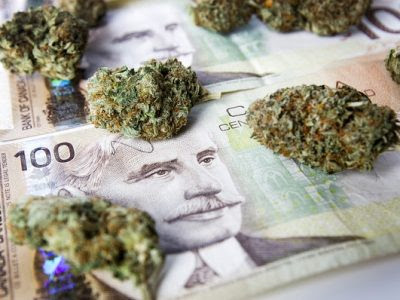A $142 billion black market (UNODC, 2005) and 183 million users worldwide (UNODC, 2017) raise questions about the efficiency of cannabis prohibition. What is more, it would be naïve to believe the illegal market for cannabis is the prerogative of small and uncoordinated criminal groups. It is a sizeable industry, which involves sophisticated and powerful criminal organizations, such as Al-Qaida in Islamic Maghreb (UNODC, 2017). In this environment, cannabis legalization could deprive organized crime of a fruitful source of revenue, but it could also cause an undesirable boom in consumption – legal or otherwise (Jacobi and Sovinski, 2016). What are governments to do?
Canadian governments have proceeded under the assumption that legal cannabis must be sold at or below the black-market price. Our research suggests otherwise, because such approaches rely solely on a binary setting in which repression opposes legalization.
Canadian governments have proceeded under the assumption that legal cannabis must be sold at or below the black-market price. Our research suggests otherwise, because such approaches rely solely on a binary setting in which repression opposes legalization.
We argue in favour of legalizing recreational cannabis and its retail market, while punishing illegal purchases and supply. If consumers face risk when purchasing low-cost, illegal cannabis, there remains an opportunity to kick criminals out of the cannabis market while maintaining higher prices.
The probability of arrest and the fine dissuade consumers from purchasing illegal products. Higher, certified quality encourages users toward the legal market. Besides, repression on suppliers raises the marginal cost of illegal cannabis production – and thereby black-market prices. By raising the level of punishment and investing in increased repression, not only on suppliers but also on users of illegal product, a government could implement higher legal prices for legal cannabis. This would help control demand, while driving illegal suppliers out of business. For example, our research demonstrates that with a 1% probability of arrest and a $4,000 fine for illegal purchase, if the marginal cost for an ounce of marijuana is $125, then a legal price around $560 per ounce would evict illegal suppliers and decrease overall consumption by 12%.[1]
Our findings highlight the complementarities between legalization and repression, providing policymakers with guidelines to overcome the legalization/repression trade-off.
Tiffanie Perrault is a PhD student in Economics at the University of Montreal. Her research interests cover applications of Microeconomics to Public Policy, Health, and Education. Her thesis project includes a theoretical and an econometrical model of equilibrium dynamics in the cannabis retail market, and aims at elaborating a price structure for legal cannabis. You can find Tiffanie Perrault on Linkedin.
Continue the discussion in person.
[1] These simulations are based on current black-market price around 300$, on legalization-related boom in consumption being estimated at 48% ceteris paribus (Jacobi and Sovinski, 2016), and price elasticity being -0.7 (Davis et al., 2016); and assume the quality of black market marijuana is worth 75% of the quality of legal marijuana.



Comments
Post a Comment